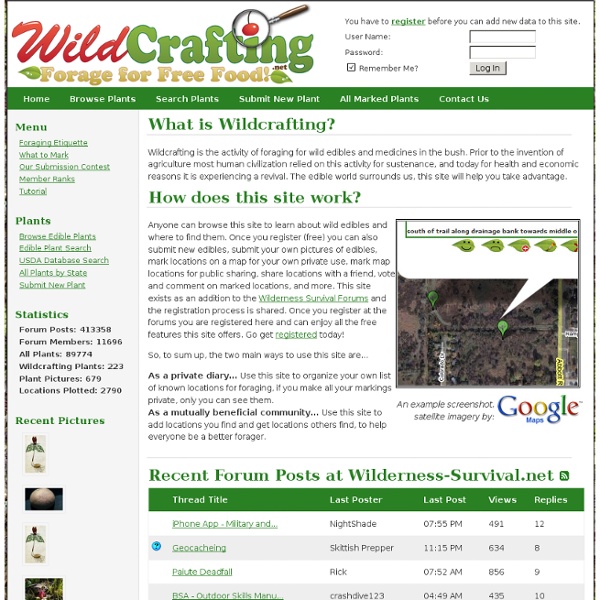



Free Wild Plant Identification eCourse You are out in the forest and looking at the glorious plant life surrounding you. Whether you are a beginner and have never identified one plant, or a Botany professor at a university, you might appreciate this refreshingly simple approach to plant identification. I remember lovingly (and sometimes screamingly) that my college classes in Systematic Botany required me to become acquainted with that local Washington Flora that we plant dorks call “Hitchcock and Cronquist”. I always felt a contradiction of rapt fascination and obsession, alternated with profound burnout, when trying to navigate this enormous dichotomous key! In addition, my observation skills as an ethnobotanist were refined , foraging for wild foods, fibers and medicine. After many years of this love affair with plants, I learned a new way to proceed in my plant identification journey that added a much-needed holistic element. What will I need? Meet a Plant Approach the plant of your choice and find a place to start.
Wild Medicinal Plants Archives | ETMarciniec.com Attention Wild Food Aficionados: Fall foraging forges forward, and by that alliteration I mean to say that foraging for wild food “has not yet ended” this fall, so don’t put away your scissors or your plastic knives or your bare hands just yet! Just yesterday I came across some fabulous fall dandelion greens in the Colorado high country despite its notoriously short growing season. They were growing amidst the deep, down-trodden grass at the base of willows lining an old mining road, and some were nearly as long as an arm! Up here, anywhere the miners and their mules once trod is a good place to look for dandelions. Continue reading Heads up, blog readers, especially those of you interested in wild edible plants–I have an exciting announcement to make! New Wild Food Girl site: Etmarciniec.com is now the proud parent of a new baby bloglet dedicated solely to the topic of wild edible and medicinal plants as well as other wild food. What happens to the old content? -Erica Continue reading ).
EWG's 2012 Guide To Pesticides In Produce™ EWG analyzed pesticide residue testing data from the U.S. Department of Agriculture and Food and Drug Administration to come up with rankings for these popular fresh produce items. All 48 foods are listed below from worst to best (lower numbers = more pesticides) Note: EWG analyzed pesticide tests of 48 popular produce items. Domestic and imported versions of two items - blueberries and snap peas - showed sharply different results, so we have ranked those domestic and imported items separately. Apples Peaches Nectarines Strawberries Grapes Celery Spinach Sweet bell peppers Cucumbers Cherry tomatoes Snap peas - imported Potatoes Hot peppers + Blueberries - domestic Lettuce Kale / collard greens + Cherries Plums Pears Green beans Raspberries Winter squash Tangerines Blueberries - imported Carrots Summer squash* Broccoli Snap peas - domestic Green onions Bananas Oranges Tomatoes Watermelon Honeydew melon Mushrooms Sweet potatoes Cauliflower Cantaloupe Grapefruit Eggplant Kiwi Papayas* Mangos Asparagus Onions Sweet peas frozen Cabbage
Elderberry Folklore The Elder Tree was supposed to ward off evil influence and give protection from witches, a popular belief held in some cultures. If an elder tree was cut down, a spirit known as the Elder Mother would be released and take her revenge. The tree could only safely be cut while chanting a rhyme to the Elder Mother. The most powerful wand in the Wizarding World of Harry Potter is a wand made of sambucus known as the “Elder Wand”. In some regions, superstition, religious belief, or tradition prohibits the cutting of certain trees for bonfires, most notably in Witchcraft customs the Elderberry tree; “Elder be ye Lady’s tree, burn it not or cursed ye’ll be” –A rhyme from an Oral tradition. otanical Name: Sambucus Nigra Common Name: Black Elder, European Elder Elderberry (Sambucus nigra [Latin]), also called elder flower, is a tree that bears cream-colored flowers followed by dark purple berries in autumn. However, it is the flowers and berries of this tree that are most often used medicinally.
Eat The Weeds by Green Deane, the most watched forager in the world Identify That Plant: Master The Skill Of Plant Identification Herbal Directory: Penn State Univ. Information on common herbs for cultivation and culinary purposes. Herbs are classified by their use - aromatic, cosmetic, culinary, decorative, dye, medicinal and ornamental. Important Disclaimer The information shared freely on these pages is meant for cultivation of the crops and for culinary use only. Other uses are simply noted, so that readers are aware that they exist. Contact Michael Orzolek, Professor of Vegetable Crops The Herb directory was developed by Keppy Arnoldsen, Aimée Voisin and Jen Johnson under the guidance of Dr.
Bulk Food Cheap: LDS Storehouses One of my readers had sent me an email last week wanting to know where to find the storehouses run by the Church of Jesus Christ of Latter Day Saints (or the Mormon church as we’re sometimes called) in order to buy bulk food for long-term food storage. I thought I’d answer this question in a blog post so that all can benefit from it. I’ll also provide some insight into what they are, what you can find there, and of course where you can find them. What is an LDS Storehouse? For those not familiar with the storehouses, I thought I’d explain what they are and what their purpose is. The LDS storehouses (or Bishop’s Storehouse as we call them) were established as part of the welfare system set up by the Church which aims at providing assistance to needy families and individuals within (as well as outside) the Church. Funding for the welfare program (which includes the storehouses) is provided by donations from Church members. What Can You Find at the Storehouse?
Healing Stinging Nettle Everyday Carry Wildflowers & Weeds: Learn To Identify Wildflowers With Botany In A Day